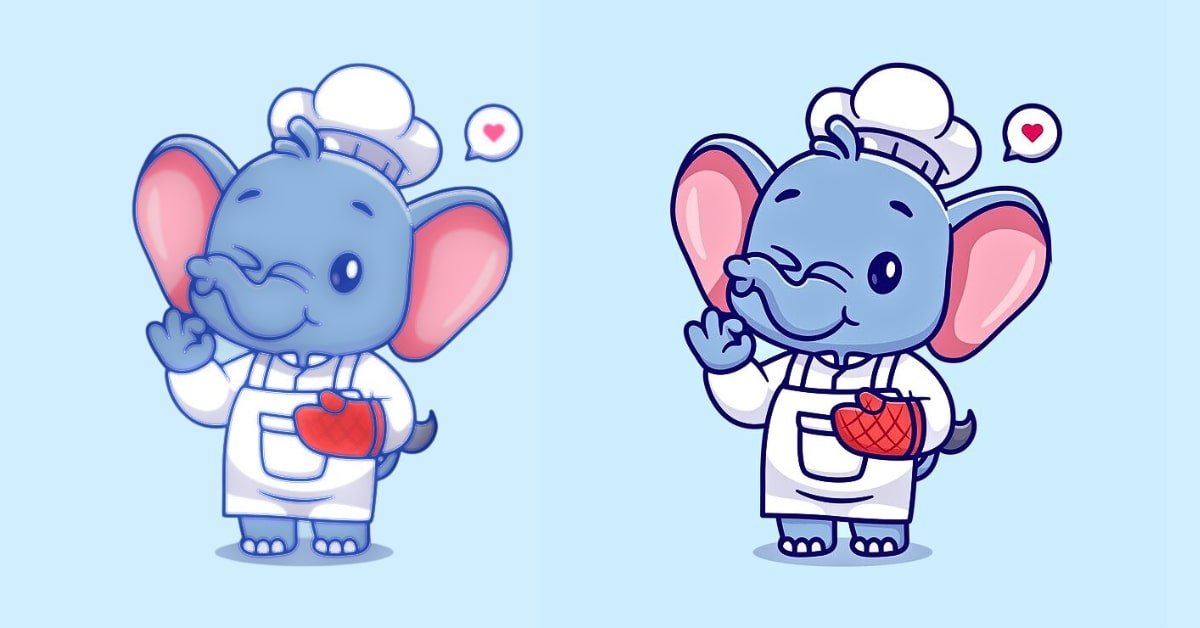In the world of graphic design and photo editing, the transformation from raster to vector graphics has become a cornerstone technique for creating versatile, scalable, and high-quality visuals. Examining real-life raster to vector examples provides insights into the power and potential of this conversion process. This article aims to showcase diverse examples of raster to vector conversions, elucidating their applications and impact across various industries.
Examples of Raster to Vector Conversions
- Logo Conversion: An ideal example showcasing raster to vector conversion is transforming a company’s logo from a pixelated image to a crisp, scalable vector format. This ensures the logo remains sharp across different marketing collateral.
- Artwork and Illustrations: Hand-drawn sketches or illustrations, when converted from raster to vector, retain their artistic integrity while gaining the advantage of scalability and editability.
- Map Digitization: Converting raster maps into vector formats allows for precise georeferencing, layering, and editing of map elements, crucial in cartography and GIS applications.
- Architectural Designs: Transforming scanned architectural drawings into vector graphics enables architects and designers to scale, edit, and manipulate elements with precision.
- Text-Based Images: Converting scanned documents or signage into vector format ensures clarity and readability of text at any size without pixelation.
Importance of Raster to Vector Examples
- Visual Consistency: Demonstrating examples of raster to vector conversions highlights the importance of maintaining visual consistency across different platforms and media.
- Scalability and Editability: Examples showcase how raster to vector conversions allow for easy scaling and editing without compromising on image quality.
- Enhanced Versatility: Seeing diverse examples emphasizes the versatility of vector graphics for logos, illustrations, maps, and technical drawings.
- Professional Applications: Examples elucidate how businesses and industries utilize raster to vector conversions to maintain professionalism in their visual representations.
Conclusion
Examining real-world examples of raster to vector conversions provides a tangible understanding of the transformative power of this process. By showcasing instances ranging from logos to maps and architectural designs, this article highlights the versatility, scalability, and professional applications of raster to vector conversions across various industries. Understanding these examples elucidates the significance of leveraging this technique for creating adaptable and high-quality graphics in the digital realm.
Frequently Asked Questions
Can any image be converted from raster to vector?
While many images can be converted, complex or highly detailed images might require more manual adjustments for optimal conversion.
How does raster to vector conversion impact image file sizes?
Vector files are typically smaller than their raster counterparts, making them more efficient for storage and faster to load on websites or applications.
Are there limitations to vectorizing photographs or images with gradients?
Converting photos or images with complex gradients can sometimes result in simplified representations, requiring manual adjustments for accuracy.
Can the original colors of a raster image be preserved in the vector conversion?
Yes, colors can be preserved, and adjustments can be made to retain or modify colors in the vector output.
This page was last edited on 27 February 2024, at 11:05 am
